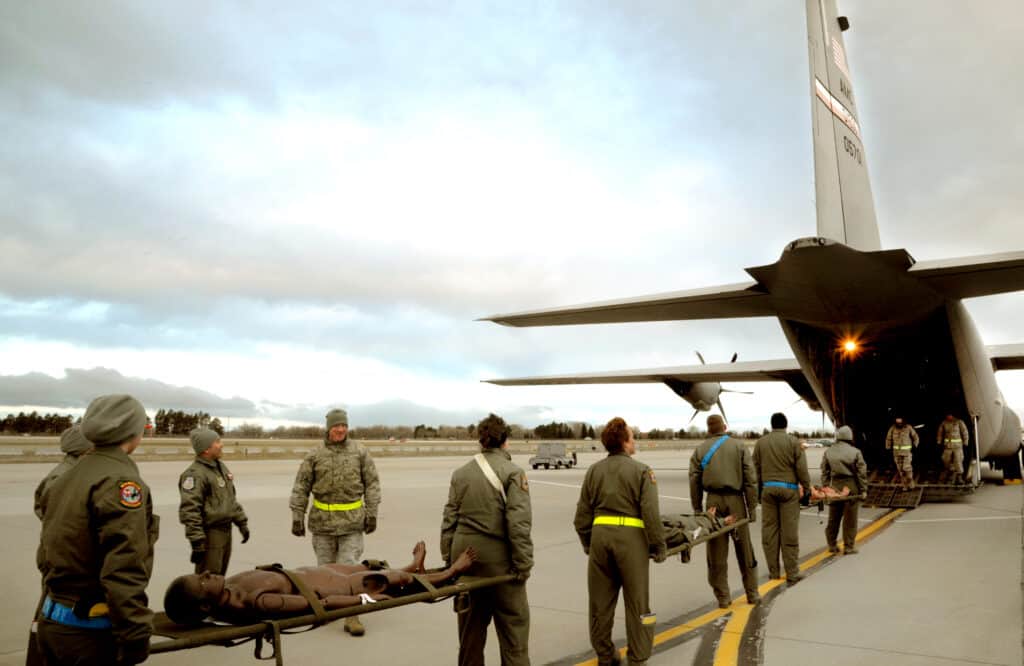Flying Class One

This article is intended to give a comprehensive recap of what your time may look like at Wright-Patterson Air Force Base (WPAFB) while conducting your Flying Class One (FC1) wether that be with the Air National Guard (ANG), Air Force Reserves (AFRC), Active Duty (AD) or through a university commissioning source such as United States Air Force Academy (USAFA) or Reserve Officers' Training Corps (ROTC). This article is written and is current as of October of 2023.
Pre-Departure
If you’re a Guard or Reserve selectee, a lot of your hard work on the forefront in regards to testing, applications, rushing and interviews leads to this trip. This is also likely the only obstacle that sits between you and OTS dates. If you’re an off-the-street hire from a Guard or Reserve unit, this very well could be your first time on military orders, so enjoy it!
Another note for off the street hires: If you’re able, get a Common Access Card (CAC Card) prior to your Flying Class One. Having a CAC card will make your life significantly easier getting on base and around Wright-Patterson Air Force Base.
If you’re an Active Duty or ROTC bubba, this trip will look slightly different for you compared to the Guard / Reserve folks including a more structured trip, no rental car, most meals coming from a white cardboard lunch box or the DFAC, and a sprinter van that you’ll pile into for trips to and from the respective sides of Wright-Patterson Air Force Base with the other cadets / selectees.
Day 0:
Day 0 starts on a Sunday with a flight from your home of record to Dayton, OH. Dayton’s airport is rather underwhelming, but everyone there is super helpful. The airport also gets a lot of government contractors and military personnel traffic, so they can help you if needed.
After you land, ROTC and AD candidates will more than likely have to either Uber or taxi, while the Guard and Reserve selectees can drive themselves with a rental car (if your unit sets you up in a rental). Regardless of how you get there, find your way from the airport to the historic Wright-Patterson Inn at 2439 Schlatter Dr. Bldg. 825, Area A Wright-Patterson AFB, Ohio 45433. The Inn isn’t anything to write home about, but it’s special in its own way. Once you check in and get settled, it’s good to reflect over the crimson red comforter, yellow tiled bathroom and old hotel carpet while thinking about all the other pilots that have gone through these same steps en-route to acquiring their wings!


Try and call it an early night. If you’re in the pre-assigned Group A (you will receive this assignment via email the week prior) start fasting at 7 PM, and prepare for giving 12 vials of blood and a urinalysis bright and early in the morning by drinking lots of fluids. If you’re a part of Group B, eat as late as you want but it’s also wise to start drinking water in preparation for the next few days.
Overall disclaimers relevant for all days at your FC1:
Things worth bringing with you every day:
- A pen to sign and fill out medical documents
- Some snacks (something like peanut butter crackers does well at holding you over until lunch after giving blood or if some of your exams dig into your lunch hour)
- A good book (there is no reception in the waiting room)
- Sunglasses (at some point you’ll have your eyes dilated so sunglasses are a must)
- Your prescription glasses
What to wear: They say to dress business casual if you are an off-the-street hire. Khaki pants or chinos and a collared shirt or button down works great!
Things to consider: Everyone at Wright-Patt is there to help you on your way to becoming a pilot. Although it’s a stressful time, ensure you treat everyone with the utmost respect. No one is out to get you.







